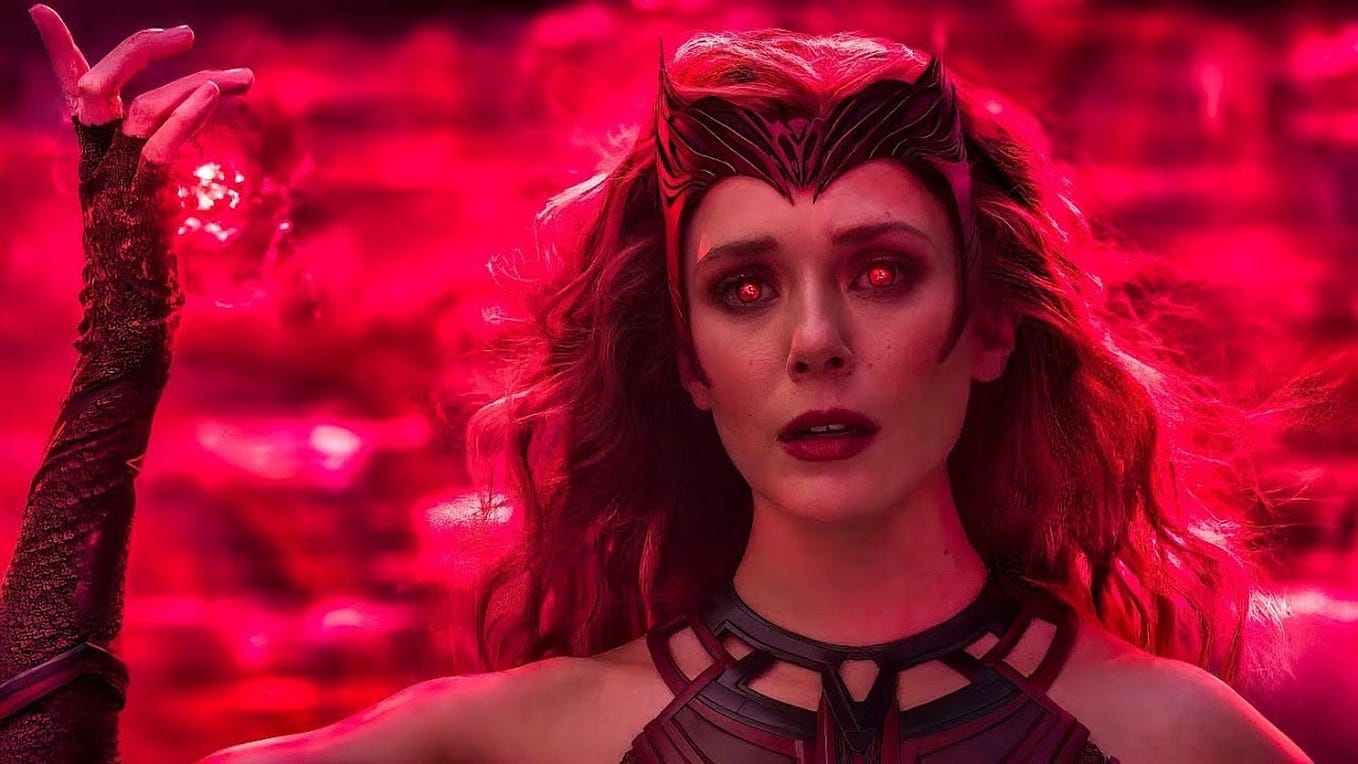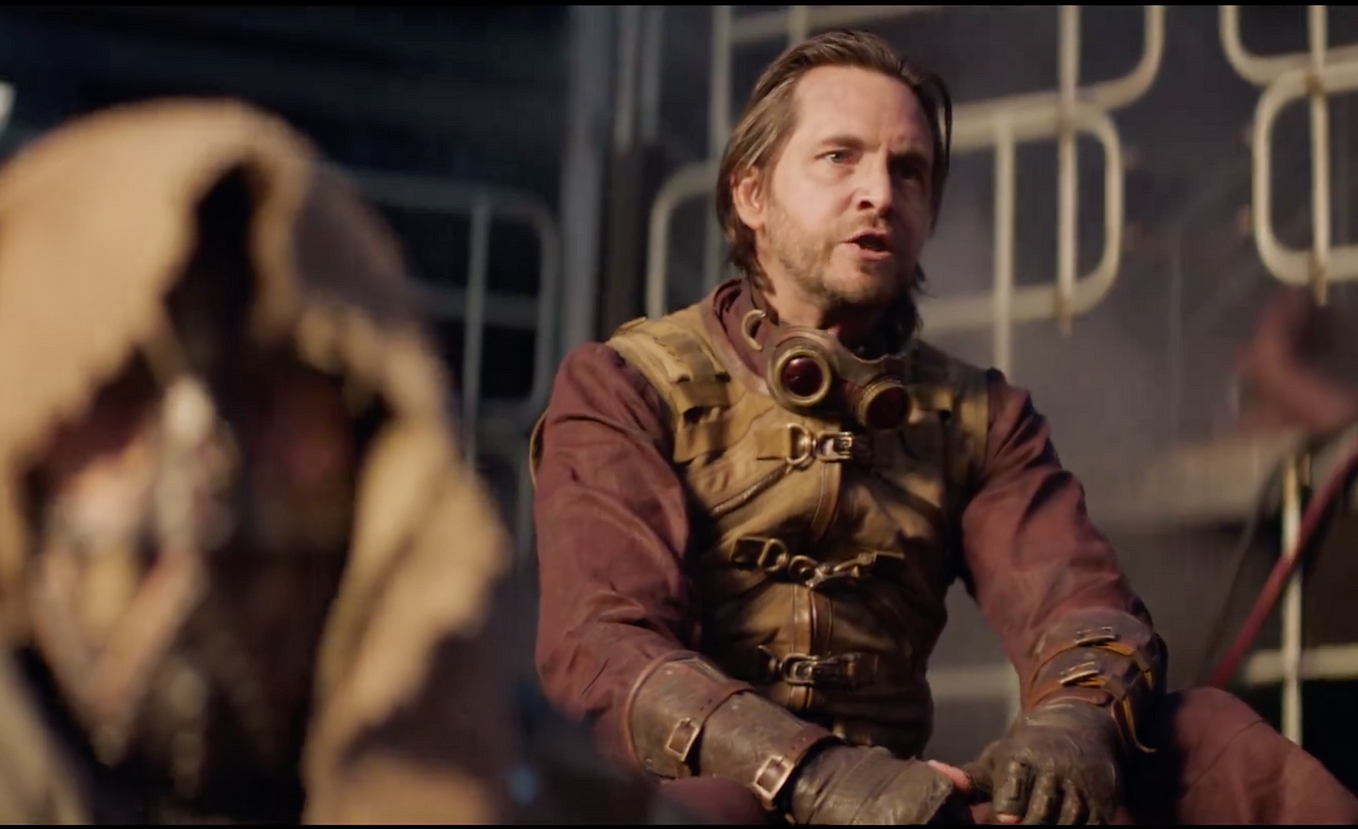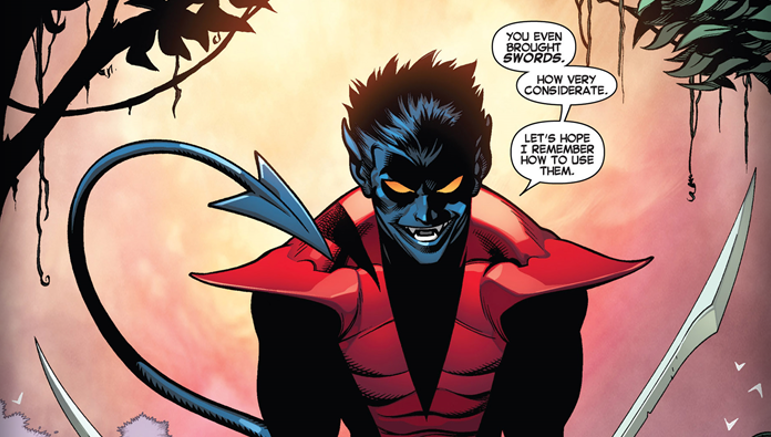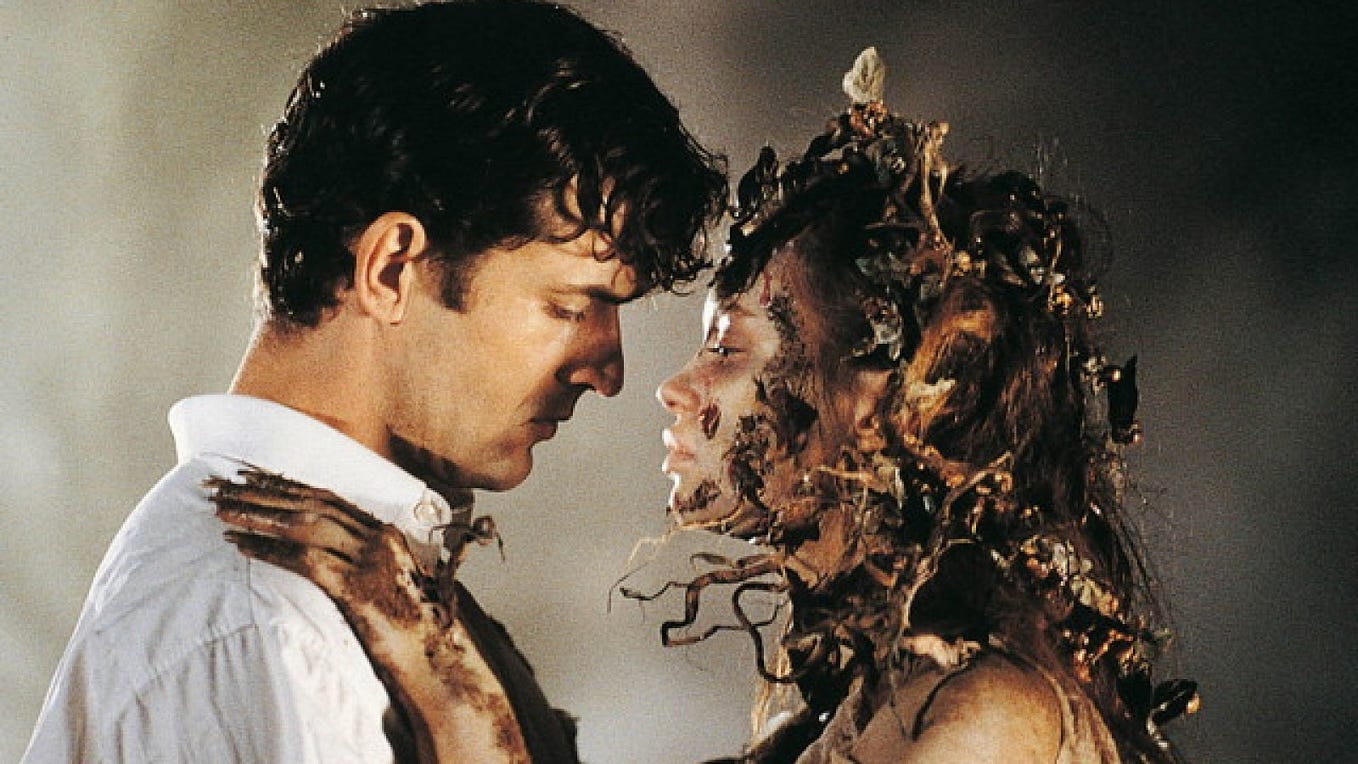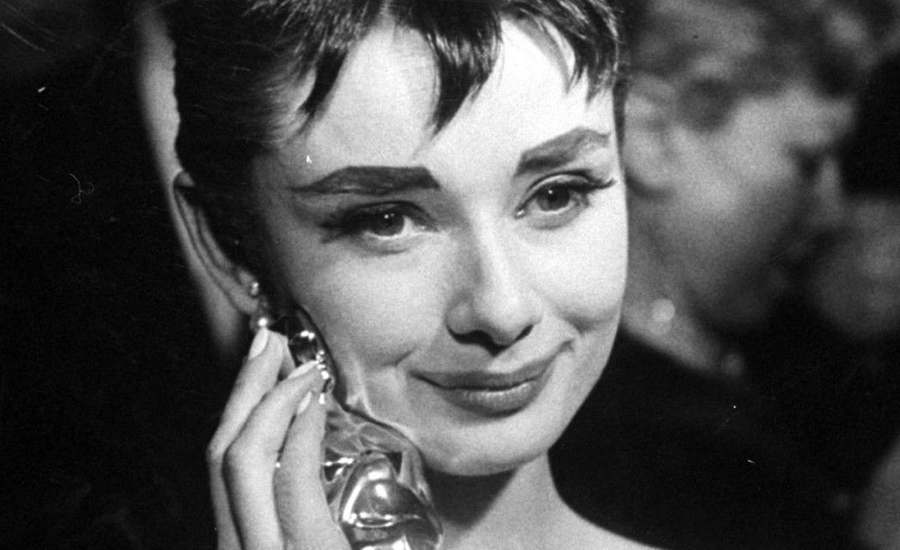Histories of Horror: The Creature from the Black Lagoon
Creature from the Black Lagoon first hit the screen in 1954, nearly a decade after the glory days of the gothic classics of Universal Studios. Those classic monsters had become played out, at least for the audiences that had been going to see them for over twenty years. Because of that, Creature is stylistically very much of its own era and far removed, in that respect, from the monsters that had preceded it. There are no crumbling castles, no supernatural being brought to life through vampirism or alchemy. Instead, it’s a film about a scientific exploration and its monster is one of science as well, a missing link between man and fish, a humanoid creature that walked out of the ocean when land was new, but was forgotten by time. And yet, spiritually, all of the building blocks of the earlier classic monsters are still there. While the action plays out in the Amazon rather than Eastern Europe, the intent is the same. It’s an undiscovered place, a place where you must heed the warnings of the locals, a land identified in much the same way as Stoker’s Transylvania, as mysterious and dangerous if you don’t believe local superstitions and don’t know where to step. The Gill Man himself is as sympathetic a monster as any that came before him, as well. It is the last of its kind, lonely, seeking companionship wherever it can. All it knows is its homeland, which is being invaded by unwanted strangers, who want only to capture him.
The original working title of The Creature from the Black Lagoon was The Sea Monster and that’s as important a place to start as any. Technically it does fit the long literary and cinematic tradition of sea monster stories, with the obvious exception that it takes place along the Amazon River and not, in fact, at sea. Legends of sea monsters date back thousands of years and are part of the folklore of nearly every region across the globe. Historically, they were likely spawned from people seeing wildlife or weather events that they were unfamiliar with, such as whales or cyclones. Many were obvious descriptions of giant squids, which became a folkloric monster of its own until it was officially discovered centuries later.
Most mythologies have their own sea monsters. They were particularly popular in Greece. There was the Hydra fought by Heracles, as well as the Cetus, sent by Poseidon to devour Andromeda, and numerous others. The Taniwha of Māori mythology sounds much closer to the Gill Man than the giant, oceanic beasts of other historical legends. The Taniwha lived in deep pools and caves within rivers, and sometimes in the sea as well. According to various legends, they were either worshipped as protectors of important people and places, or they were bloodthirsty man-eaters who would kidnap women to claim as their wives. Descriptions of inland, river-dwelling taniwha described them as large and almost lizard-like. Many of these traits match up very, very closely with the Gill-Man.
Actual fish men were less common in folklore, though they did exist. Triton, of Greek mythology, is among the most prominent examples. The son of Poseidon, he was a merman whose appearance was much more fish-like than his godly parents. Also of note are the early Scandinavian water-dwellers, which lacked the tails of traditional mermen — as depicted in the 1210 description of a wild man caught in a fish net by Ralph of Coggeshall — and are therefore important to the visual framework of what would become the Gill-Man as well.
Literary traditions of aquatic monsters date back centuries as well. The giant squid of Jules Verne’s 20,000 Leagues Under the Sea remains perhaps the most famous of all time. In 1849, Matthew Arnold wrote a poem titled “The Forsaken Merman.” This is incredibly important to the framework of what would become Creature from the Black Lagoon. Whether the filmmakers had read or were even aware of the poem, all of the building blocks are there. The poem tells the story of a merman who mourns the loss of his human wife and children after his wife hears the sounds of church bells, the sound of Christian duty breaking her from her untraditional lifestyle. She takes the children and they return to live their lives on land, while the merman remains in the sea, alone. The DNA of Black Lagoon is very apparent here. While the Gill-man is not so articulate as the poem’s protagonist, that sense of loneliness and isolation, that yearning for a woman he cannot ever truly have, all of that is clear as day.
This poem was an apparent influence on HP Lovecraft, who popularized the concept of fish men — though his work would not be recognized until years after his death — with his story “The Shadow Over Innsmouth.” One of Lovecraft’s best (yet at the same time obviously influenced by his own fear of race mixing) the story depicts a backwards, coastal Massachusetts town in which the residents turn into fish creatures over time, a visual distinction known as “the Innsmouth look.” While Lovecraft only saw moderate success as a writer during his own lifetime, his works and mythology — which is often rooted in aquatic horror, centering on the Great Old One Cthulhu, an octopus-like sea god that slumbers within a sunken city — have become seminal to modern horror fiction, and “Shadow Over Innsmouth” is now regarded as perhaps the best known “fish people” horror story of all time.
The location is as important to Creature from the Black Lagoon as the monster itself, too. The film depicts the Amazon with a great deal of exoticism, a land totally alien to (white) man, full of any number of dangerous mysteries. Yet it also carries some environmental undertones as well. By this point, the Amazon had already long been pillaged for its natural resources. In addition to sections of the rainforest being mowed down for things like rubber, there are animals sold into the exotic animal trade and to zoos, the list goes on and on. The Gill-Man undergoes the same treatment, particularly in the film’s two sequels. In those, he is captured from his homeland, taken to the United States and put on display, and even if those plot points don’t explicitly occur here, the intent to do so is clear. In some ways, The Creature from the Black Lagoon is the aquatic retelling of King Kong, if the monster was believed to be killed before the humans could manage to separate him from his homeland.
The origins of the film itself began when William Alland, who portrayed Thompson in Citizen Kane and would produce Creature, attended a dinner party in 1941, during Kane’s filming. There, Mexican cinematographer Gabriel Figueroa told him a story of humanoid, fishlike creatures that supposedly lived in the Amazon river. There are no legends that quite match up to that exact claim, but it’s possible that Figueroa had his regions mixed up, or had read something that had mixed them up, or of course it’s also entirely possible that he made it up. Whatever the case, the story stayed with Alland for ten years, when he eventually wrote his initial notes for The Sea Monster in 1951.
This idea was rewritten into a treatment in 1952 by Maurice Zimm, and then fleshed out into a full-fledged script as The Black Lagoon, by Harry Essex and Arthur Ross. While this film was in development, another horror picture hit big at the box office thanks to its central gimmick. That film was the Vincent Price feature House of Wax, most famous for being filmed in 3D. Due to its success, Universal hired Jack Arnold to direct Creature from the Black Lagoon in 3D, hoping to recreate that success.
The bulk of the classic Universal Monsters were designed by legendary makeup artist Jack Pierce. He created the instantly recognizable likenesses of Frankenstein’s Monster, The Mummy, The Wolf Man and more, but most of those films had been made over two decades before Creature from the Black Lagoon. This time, the design of the creature, the Gill-Man, was attributed to Bud Westmore. He received sole credit for the creation of the Gill-Man for decades. He was the person who ran the makeup department at Universal Studios during the production of Creature from the Black Lagoon. He’d done the makeup and created the creatures for dozens of films and television shows, so it seems like people decided there was no reason not to simply take his word on the subject. But it was, of course, a lie.
Milicent Patrick is the most important person in the creation of Creature from the Black Lagoon, as she was the one who actually created the Gill-Man and thus gave us one of the most instantly recognizable, legendary monsters in horror movie history. Thanks to the title of a crucial book on the subject by Mallory O’Meara, she has been dubbed the Lady from the Black Lagoon. Patrick had been hired by Westmore in 1952 after showing him some of her sketches during the production of The World in His Arms. She became the first woman to ever work in a special effects makeup department. William Alland had called Westmore to relay to him the stories he had heard of a half-man/half-fish residing somewhere deep in the Amazon, which he still seemed to take at face value as a real creature that might actually exist, lost to time. While the script was greatly expanded and rewritten from the original kernel of Alland’s idea, I think much of the wonder, awe and horror retained in the film itself stems from the fact that the man who conceived the story genuinely seemed to believe that this thing might actually be out there.
Westmore tasked Patrick with designing the Gill-Man, with her only real guidelines being that the creature should have pulsating gills, the ability to swim, and a general unearthly look. Her research led her to prehistoric reptiles and amphibians, as that was essentially what the creature was in the script, a prehistoric missing link between fish and man. And from there, she designed one of the most iconic monsters in movie history. But the attempts to keep her from claiming ownership of that began pretty much as soon as the movie was released. Patrick was initially introduced to the press to promote the film as “The Beauty Who Created the Beast,” but that was quickly changed to “The Beauty Who Lived With the Beast,” to avoid giving her credit for the Gill-Man’s creation.
The film’s production was split between Universal Studios in California and Wakulla Springs, Florida, for the underwater sequences. Fittingly, the two halves of production had two separate Gill-Men, with Ben Chapman playing the creature in the studio and Ricou Browning portraying him in the dazzling swimming scenes.
From there, it became one of the most iconic movies in horror history. Some argue that the Gill-Man shouldn’t be considered a part of the “main” lineup of Universal Monsters, as he arrived on the scene over twenty years after the founders, Dracula and Frankenstein, made their debut in 1931. People point out that those early Universal movies were gothic horror, whereas Creature from the Black Lagoon is a horror firmly rooted in the realm of science-fiction. I’ve never liked those arguments, though. First of all, The Wolf Man is never disputed as a core Universal Monster despite that film coming out a decade after Dracula and Frankenstein. And even though the Gill-Man is a monster of science-fiction origin, the classic Universal Monsters are mainly bound together by themes of being outsiders, being lonely, being creatures at odds with the rest of the world through no fault of their own, and all of those qualities are present in the Gill-Man. He is utterly alone, yearning for companionship that he can never have, curious about the world around him, just as Frankenstein’s Monster had been before him. If anything the Gill-Man takes all of those elements, those classic monster archetypes, and modernizes them for the horror landscape of the 1950s.
As a film, Creature from the Black Lagoon remains a stunning achievement even seventy years later. It is not only still an engaging monster movie, it is at times legitimately gorgeous. The shot of Julie Adams as Kay swimming on the surface of the water with the Gill-Man swimming in synch just below the surface is one of the most recognizable shots in movie history, and for good reason. It is mesmerizing. It does one of my favorite things a movie can do, which is to have a single shot that can manage to sum up the entire movie, and it is one of the best shots to ever do that. On one hand, simply as a horror film, it completely gets across the fear of something lurking beneath the surface without your knowledge. It’s the fear that you simply don’t ever really know what’s down there. And yet it doesn’t feel scary. There’s a sense of tragedy to that shot that is absolutely essential. The Gill-Man is moving in time with her, perhaps yearning for her, perhaps mimicking her, but either way divided from her, a dance partner who is invisible and completely alienated. An outsider who, though inches away, might as well be in another world.
The movie as a whole very much plays with these notions, while also being a story about humanity’s need to destroy in the name of discovery, even sometimes unconsciously, because it’s just second nature to us. The Gill-Man is largely innocent. He kills people moving in and making camp on his territory, where there have never been people before, the way any threatened animal would, especially with a new species. He lashes out at people who are invading his homeland and attempting to capture him and tear him away from the only home he’s ever known, either to dissect him or put him on display for public amusement. At the end, he does kidnap Kay, who he has a fascination with, in a very classic “bride of the monster” trope, sure, but in a larger sense all he’s really doing there is seeking some attempt at communication with the only one of these goddamn fools who hasn’t tried to kill him yet.
Today, though it is usually recognized as a “classic B-movie,” Creature from the Black Lagoon is nonetheless recognized as a classic. It’s one of the most influential monster movies in history and Milicent Patrick’s iconic design has become a pop culture staple. The Gill-Man appeared in two direct sequels, Revenge of the Creature and The Creature Walks Among Us and in a less official capacity has appeared in everything from Mad Monster Party to The Monster Squad. But the most important resurgence of the Gill-Man in film came in 2017. As a boy, Guillermo del Toro had been brave enough to see that iconic shot of the creature and Kay swimming and ask, “why can’t they end up together?” That question lingered into adulthood and led him to make The Shape of Water, which was originally conceived as a remake of Creature from the Black Lagoon. Instead, it stands as a love-letter to that film, and more than that, a love-letter that swept the Oscars. Centering on a romance between a woman and a fish-man plucked from his home, neither of whom can communicate with one another through speech, it could easily be a sequel to the original movie, but stands best a declaration of love for it, and in general, love in all of its forms.
Shape of Water perfectly represents the legacy of Creature from the Black Lagoon and the influence it has had. This drive-in monster movie filmed in 3D inspired someone so profoundly that they made a movie decades later that garnered massive mainstream success, and that success in turn led many mainstream critics and film historians to re-evaluate the original film and finally see it for the work of art that it legitimately is. In 2024, the Gill-Man remains one of the most recognized monsters in the world. But none of that could have happened without William Alland’s original concept, without Ricou Browning’s elegant underwater performance or Ben Chapman’s animalistic surface scenes. Above all else, it could not ever have happened, and the Gill-Man could never have become everything from a postage stamp to Burger King toy, without Milicent Patrick creating one of the most recognizable creatures in film history.
This article was originally written for Council of Zoom’s Histories of Horror column, though it went unpublished before the site closed.

